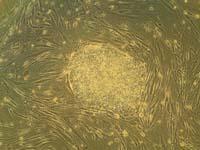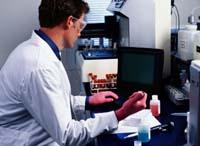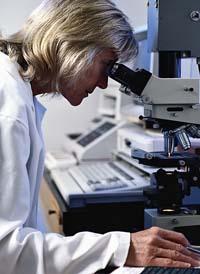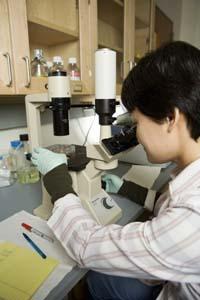The question of hybrid embryos
2007/09/22 Galarraga Aiestaran, Ana - Elhuyar Zientzia

In fact, the law is quite bold, since it is the first time in Britain the mixture of human DNA and animal DNA has been authorized (although it hardly has animal DNA). They have done so with a clear goal: that researchers can get embryonic stem cells without having to use the women's eggs.
However, some have caused concern and fear. However, the extent of a disproportionate social concern is a risk that can hinder research. For this not to happen, it is essential to know what stem cells are, how they are obtained, and what they are used for.
Opportunities and limitations
In fact, embryonic stem cells are a raw material of enormous interest to researchers. In the body we have more than two hundred types of cells. Each type has its peculiarities, since it is specially designed to fulfill the functions to perform. But they all have the same origin: an egg fertilized by a sperm. The first cells of the newborn embryo have the ability to become all kinds of cells, which are lost as the embryo grows and cells specialize. They are, therefore, the first cells that interest researchers. These are precisely the stem cells.

In the tissues of the adult there are also stem cells, for example, specialized blood cells come from stem cells of the bone marrow, such as red and white blood cells. However, being the stem cells of adult tissues more specialized than those of the embryo, they have limited their capacity of administration.
However, several groups of researchers try to reprogram these stem cells from adult tissues to be like those of the embryo. However, the results are not as satisfactory as expected. Not only because they do not fully acitate to reprogram the cells as desired, but, compared to those of embryonic origin, the stem cells of adult tissues are more difficult to use in a laboratory, difficult to conserve and multiply slowly.
Thus, many researchers believe that embryo stem cells are the most suitable for research. The aim of these studies is to thoroughly investigate cell behavior, better know some diseases (Alzheimer's or Parkinson's diseases, diabetes...) and try new therapies. In the long term, researchers also hope that they can respond to the aforementioned diseases.
Trying to overcome the difficulties
But research with embryo stem cells also has difficulties. The first is the collection of stem cells. In many countries, the use of embryos is forbidden, stem cells are extracted from embryos within a few days and then destroyed. And this is not ethically acceptable to certain sectors of society.

In other countries, the use of excessive, assisted fertilization embryos for the extraction of stem cells is permitted. But this does not solve everything either, because on the one hand there are a limited number of embryos and, on the other, sometimes researchers need cells with genetic information from a given person, for example, to investigate a person's disease. For this purpose they use the technique known as cloning.
In this technique, researchers take an adult cell, such as a cutaneous cell, and extract genetic information (nucleus). Then, introduce this genetic information into an egg that has the nucleus suppressed and activate it to begin to develop. The embryo thus created is a clone of the adult person.
Researchers let it grow for a few days in the laboratory and then extract stem cells. The embryo is lost and the cells removed are led by researchers to be the type of desired cells, such as the brain, pancreas... These cells are an example of research of the disease that interests them.
In addition, stem cells of embryos need other research tasks for which the cloning technique is appropriate. The problem is that there are few female eggs. In addition, the egg donation itself is ethically debatable, since the process of extracting eggs to a woman is very hard for her. In addition, in many places the donor receives money in payment, which means that many donors are women who need economically.
The researchers have devised a solution to avoid the need for female eggs: the use of animals. When the nucleus is eliminated and replaced by a human cell, the genetic information of the embryo they generate is from man, 99%. The remaining 1% is genetic information of the mitochondria present in the cytoplasm of the animal cell.
That has been called the hybrid embryo, and now the British law allows it to do so. Hybrids? Yes, but not like centaurs (half man, half horse) or nautical (half woman, half fish). Hybrid embryos have a clear objective: to be a source of stem cells for research, which have been regulated in Britain. Now, the investigations bear fruit.
Published in Gara.

Gai honi buruzko eduki gehiago
Elhuyarrek garatutako teknologia






